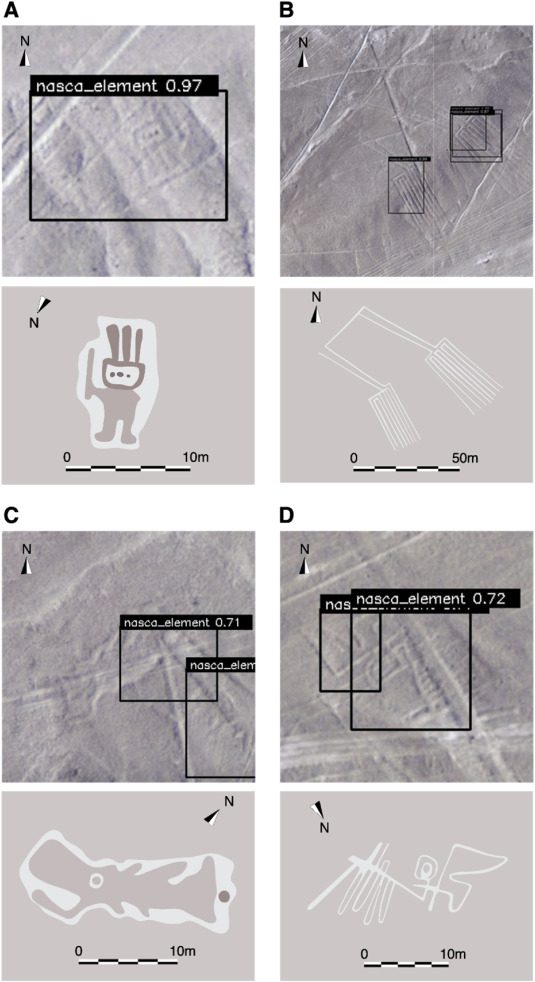Artificial intelligence (AI) has been used to identify a handful of “Nazca Line” geoglyphs that were carved in the deserts of southern Peru thousands of years ago. The collection of colossal ancient carvings – pictured below – depict a pair of legs measuring 78 meters (256 feet) in size, a fish measuring 19 meters (62 feet), and a 17-meter (56-foot) bird.
The new research comes from a team at IBM Japan and Yamagata University who used deep learning algorithms to scan through a vast quantity of aerial photographs capturing parts of the Nazca Desert, the coastal desert in southern Peru that’s well known for its ancient artworks etched into its landscape.
Using this technique, the scientists claim they can sniff out potential geoglyphs around 21 times faster than with the naked eye alone.
The model does this by rapidly analyzing vast banks of visual data and learning to understand which features are associated with certain categories, which in this case are the lines of the Nazca Desert’s geoglyphs.
“Deep learning is a method of machine learning that builds and trains neural networks, which are inspired by the interconnectedness of nerve cells in brains, to enable computers to learn the features from large amounts of data and to subsequently make predictions or decisions. It demonstrates high performance in tasks such as image recognition, speech processing, and natural language processing,” a statement by Yamagata University about the new research explains.

Four new Nazca geoglyphs identified by Deep Learning: including a humanoid figure, a pair of legs, a giant fish, and a bird-like symbol.
Image credit: M Sakai, et al. Yamagata University, 2023
“Object detection through deep learning automatically identifies specific classes of objects from images and determines their location, size, and classification. It is similar to the process humans use when detecting things like ‘dogs’ or ‘cats,’ but in this case, the computer does it,” the statement adds.
The Nazca Lines are a group of geoglyphs in the Nazca Desert created between 500 BCE and 500 CE. Hundreds of these mysterious carvings have been discovered over the past century.
They are made by carving depressions in the ground, which removes the top layer of reddish iron-rich dirt to reveal a lighter-colored subsoil.
Natural motifs are common in the Nazca Lines, such as animals – including fish, birds, bugs, lizards, dogs, cats, monkeys, and humans – as well as plants – like trees and flowers. Some images are more supernatural, including two-faced humanoid monsters and giant two-headed snakes eating people.
There’s a lot of speculation about why people went to great efforts to create these giant etchings. Some researchers have theorized that they may have served as travel markers or had some kind of astronomical significance, while others suggest they were artworks made for deities in the heavens.
For now, the answer to this question remains unknown – even to AI.
The new study is published in the Journal of Archaeological Science.
Source Link: AI Discovers Giant New Nazca Lines Hidden In Peruvian Desert